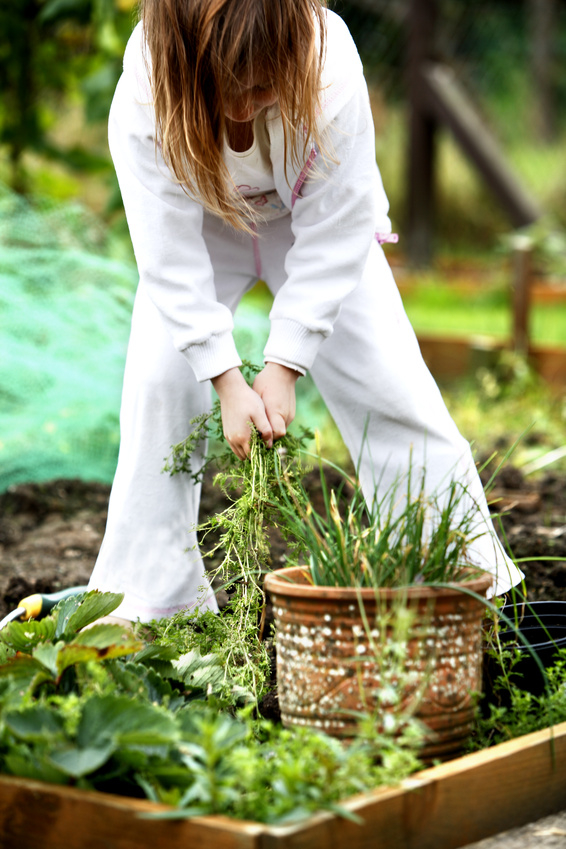
One of the more onerous chores in gardening is weeding. But there are tricks to make it less so.
1. Invest in a good weeding tool.
It makes me cringe when I see people trying to weed with a knife or worse yet, one of those pronged garden fork cultivator things. Those are to loosen the soil—not to remove weeds. You’re simply cultivating the weeds to help them grow better.
A hoe is fine for small weeds in areas like vegetable gardens, but in flower beds and other tight spots, use an Asian plow or Korean hand hoe or Cape Cod weeder. Once you use them, you’ll wonder how you ever lived without them. They are seldom in bricks-and-mortar stores but are readily available online.
2. Get ’em small.
I know—easier said than done. But getting weeds small saves hours later. And never, ever let weeds go to flower or seed. You might as well go through your garden and plant them from a seed packet. My mantra is funny old-fashioned garden quote I saw once on a little garden sign: “Suffereth not a weed.”
3. Weed when it’s wet.
The best time to weed is the day or two after a good rain so you can get roots and all. But if you haven’t had a good rain, give the area a good soaking with a sprinkler. Give it at least a couple of hours to percolate and spread out evenly through the soil (or else you might be weeding in a muddy mess) and then do your weeding.
4. Mulch, mulch, mulch.
Each spring, I order about a pickup load of shredded bark mulch from a local landscaper and then spread it 1 to 3 inches deep around everything. You’ll reduce watering, prevent disease, and cut the reappearance of most weeds by about half.
5. Consider chemicals.
I wish I were disciplined and relaxed enough to go totally organic. Instead, I simply keep chemicals to a minimum. So when I am finding it difficult to keep up with my weeds, I take a two-step approach.
First, in the early spring, when the bright yellow forsythia is blooming, I sprinkle an application of Preen (or any other pre-emergent weed killer) on all my flower beds. Preen prevents seeds of any sort from germinating, and lasts for months in the soil, so don’t put it on vegetable gardens or any other place you’re going to plant seeds. Again, if you choose a more organic choice, skip it!
Secondly, later in the spring, I use a non-selective weed killer, like Roundup. This is a liquid spray that will kill or damage any plant it touches. I try to use this as a last resort and only on those plants where weeding hasn’t worked. It’s not helpful for any weed, though, more than a couple of inches high because it’s way easier at that point to just pull the damn things than it is to spend the time, money, and environmental impact in dousing large weeds.
Use Roundup on a dry, sunny day (the sun helps it do its work) when no rain is predicted for the next 24 hours or so. Keep in mind that tough weeds might need two or even three applications–which for me is another reason to not bother with it unless I have to.
In mid- and late-summer, when the weeds are at their most challenging, I may do another sweep through the garden doing some spot application if necessary.
6. Know when to pull and when to hoe.
Hoeing is good only when weeds are less than an inch tall or wide. Pull all other weeds, using one of the above weeders to uproot them or slice them off.
But be careful. Some weeds, such as purslane and wild campanula, can be spread by hoeing. When you cut and scatter tiny bits through the soil, they grow into new plants. So you’re not weeding as much as propagating!
And sometimes it’s just easier to pull weeds, especially those that tend to sprawl, like creeping charlie (also called ground ivy) and Virginia creeper. Also, with dandelions you’ll want to be sure to get the top 2 inches of the long tap root if you can.
7. Weed in the late summer and fall.
By the time August and September roll around, we’re tired. It’s hot. The garden looks ratty and it’s uninspiring to be out working in it.
But summon what gardening energy you have left to keep up with the weeding. One study showed that fall weeding reduced overall weeding the following year by 75 percent! Which sort of makes sense. Late summer and early fall is when many weeds are going to seed.
Good luck!
— Veronica Lorson Fowler
Please do not use content from this site without express permission from The Iowa Gardener. Click here to request permission.